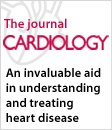|




| |
Vital sign device
improves resuscitation monitoring |
November 8, 2003
ORLANDO, FL (AHA)
–
A
small device can give doctors the “big picture” of patients’
vital signs, researchers reported during the Resuscitation
Science Symposium at the American Heart Association’s Scientific
Sessions 2003.
The device, called “Vital Dust,” transmits patient data to a
hospital or centralized location, allowing others to see the
data and also gain a global view of all patients in the field
who are being similarly monitored. It measures heart rate and
the percent of oxygen saturation in the blood, an important
indicator of a person’s cardiopulmonary status. A radio
transmits the information to a wearable or handheld computer,
where it is displayed for a medical team.
“If there is a mass casualty event, having this information
on all the victims will allow the emergency medical technicians
to triage right then and there, giving the sickest people
priority. In single-person casualties, we’ll know right away if
the patient has a sudden change in status and needs immediate
attention,” said Matt Welsh, Ph.D., assistant professor of
computer science at Harvard University, one of Vital Dust’s
developers and lead author of the study.
“This advance may lead to a more rapid triaging system,” said
Steve Moulton, M.D., one of the researchers who tested the
device.
Vital Dust consists of a small, low-power computer connected
to a sensor that fits over the patient’s fingertip. It is about
six centimeters by three centimeters, or the size of a pack of
chewing gum. Vital Dust runs on two AA batteries and includes
an embedded microprocessor, memory, and a wireless communication
interface.
Another unique feature of Vital Dust is its ability to store
the pre-hospital electronic medical record together with a
record of the patient’s vital signs.
“This form of data management enables a copy of the
pre-hospital record to travel with the patient, giving
hospital-based personnel the ability to review what was done in
the field and determine how those maneuvers may have influenced
the resuscitation process,” said Moulton.
Moulton and his study co-authors are integrating Vital Dust
sensors with iRevive, a pre-hospital mobile database, to
automate the process of capturing patient information.
One of the unique features is that the radio can adjust the
power for transmitting information, Welsh said.
“If a patient’s heart rate slows dangerously or his oxygen
saturation level drops precipitously, the system will
automatically adjust the transmission power so that a stronger
signal is sent out and has a greater chance of being received by
the paramedic,” he said. “The radio would back off transmitting
other patients’ data, thus giving a critical patient’s signal an
even greater chance of going through.”
This is the first wireless network designed to give priority
to victims in critical condition, Welsh said. “Continuous
real-time monitoring of vital signs in the field should greatly
improve the effectiveness of emergency medical care.”
Co-authors are Dan Myung, A.B. and Mark Gaynor, Ph.D. |
|
|
|